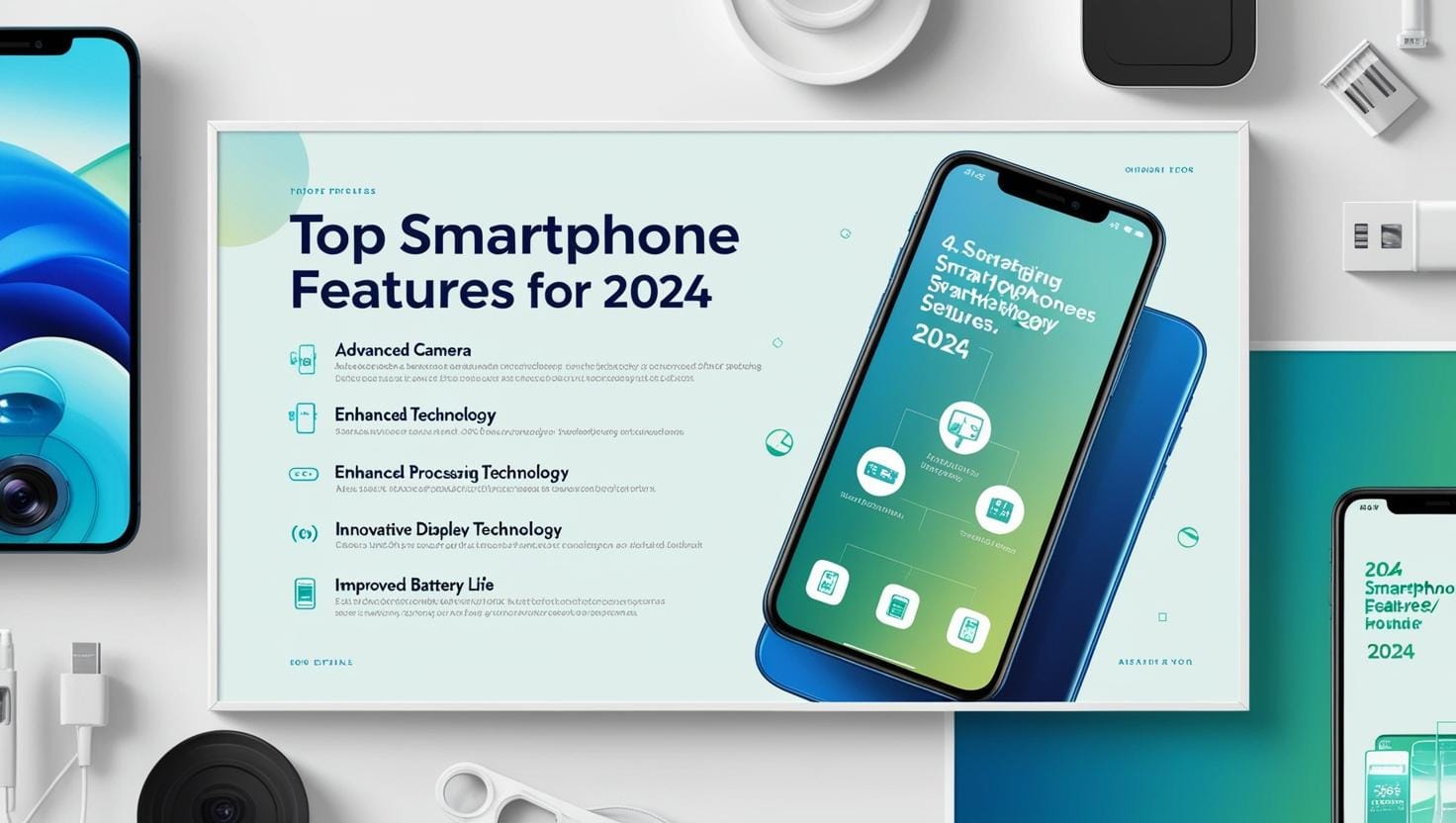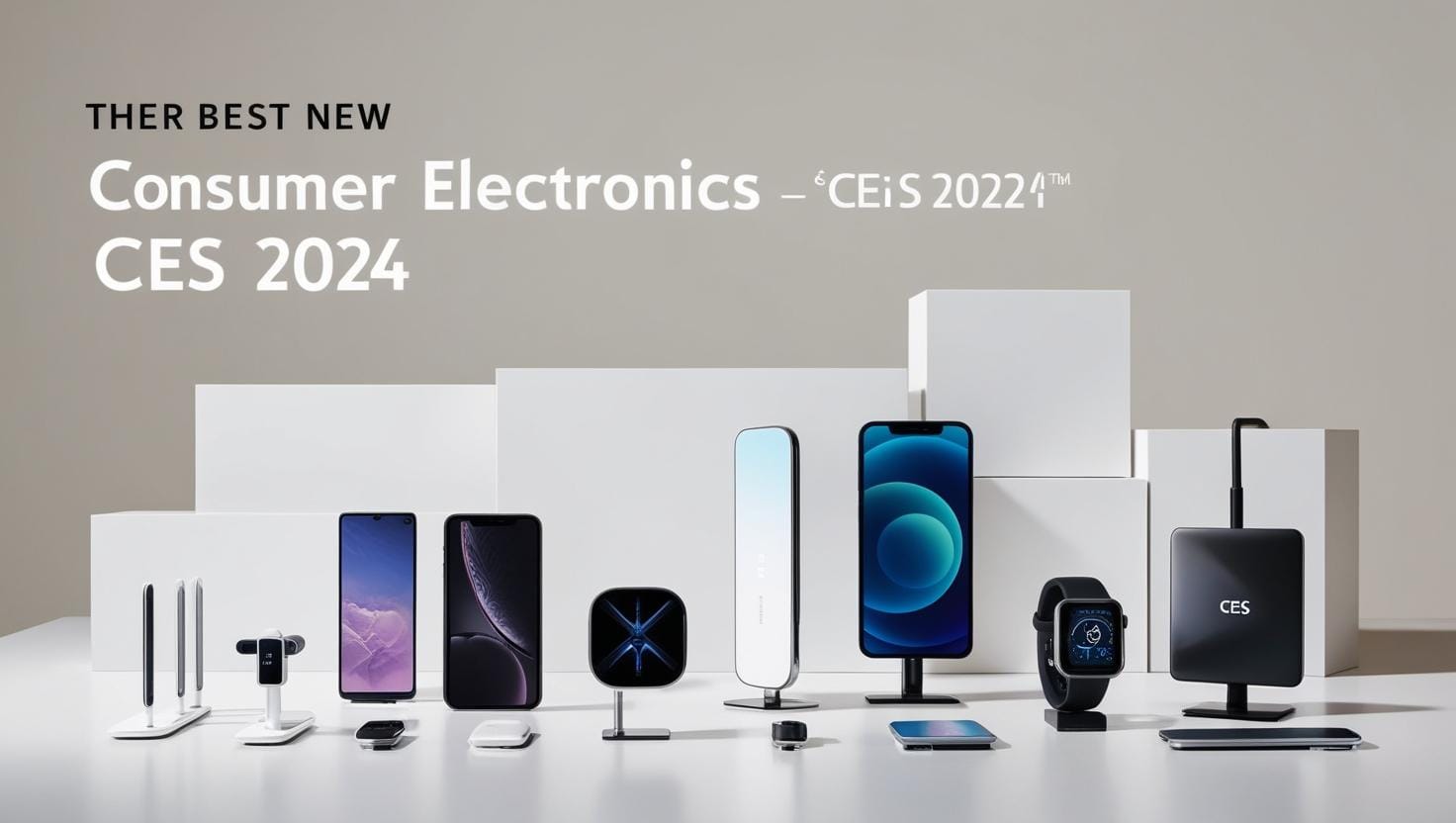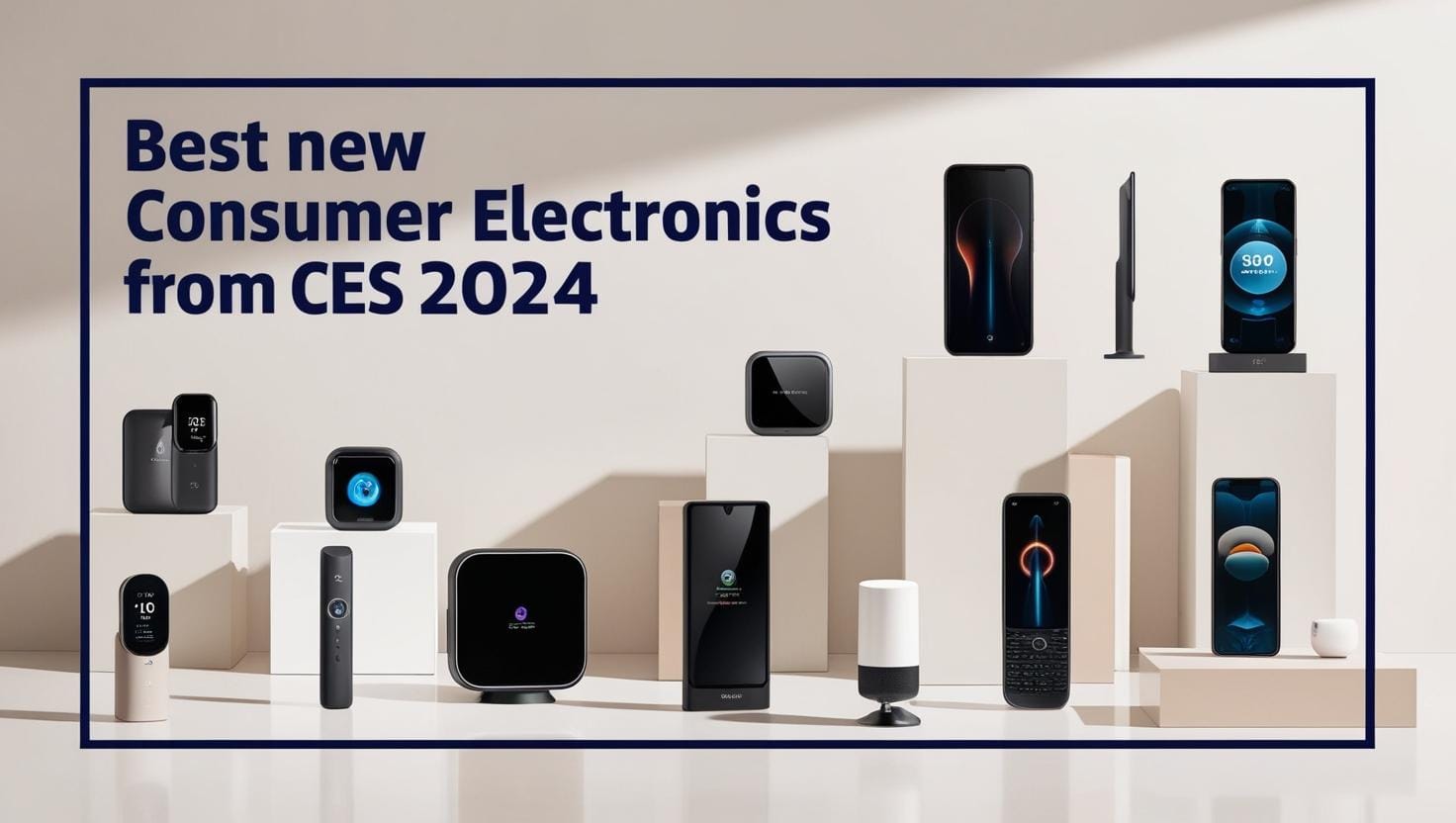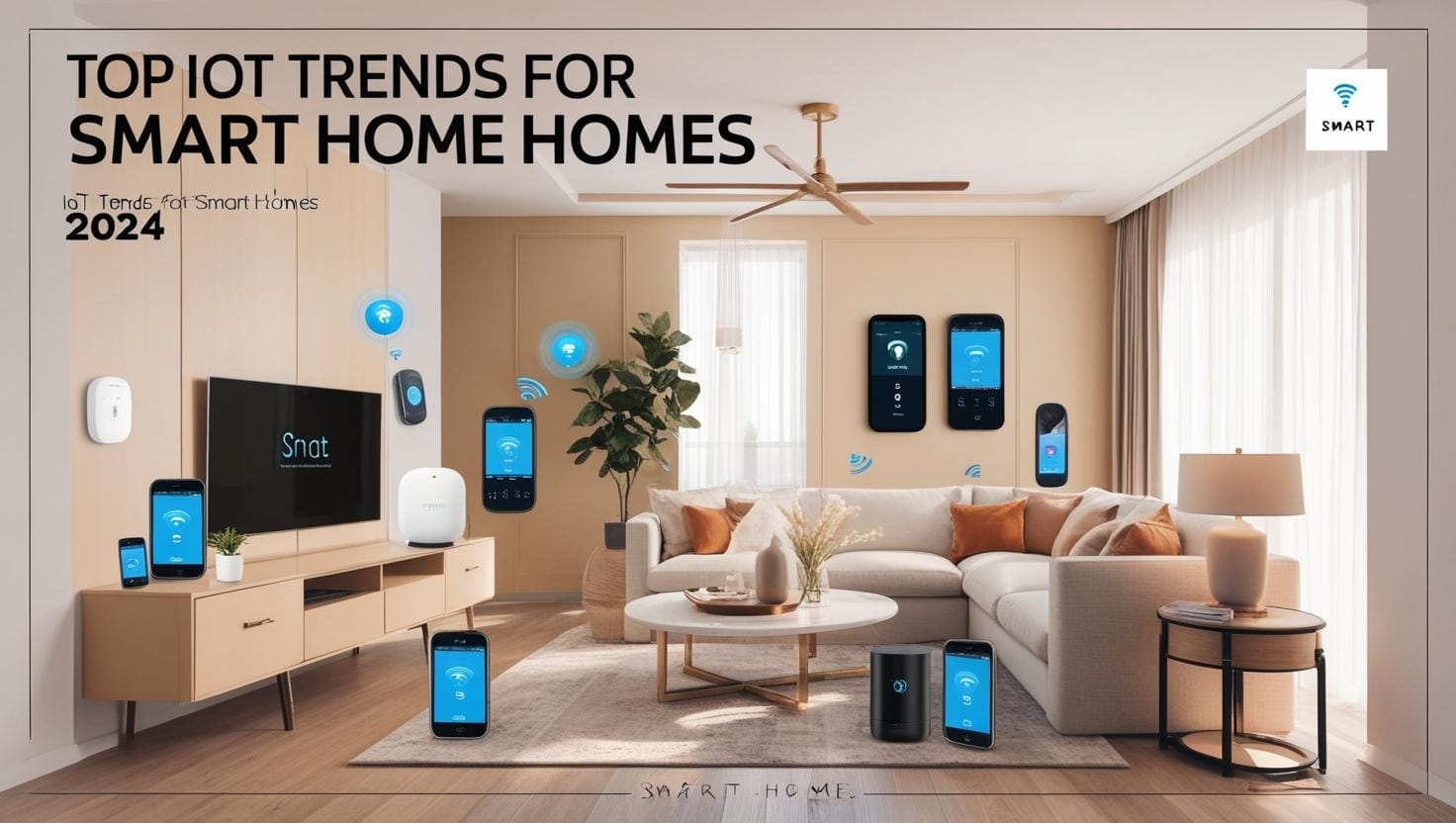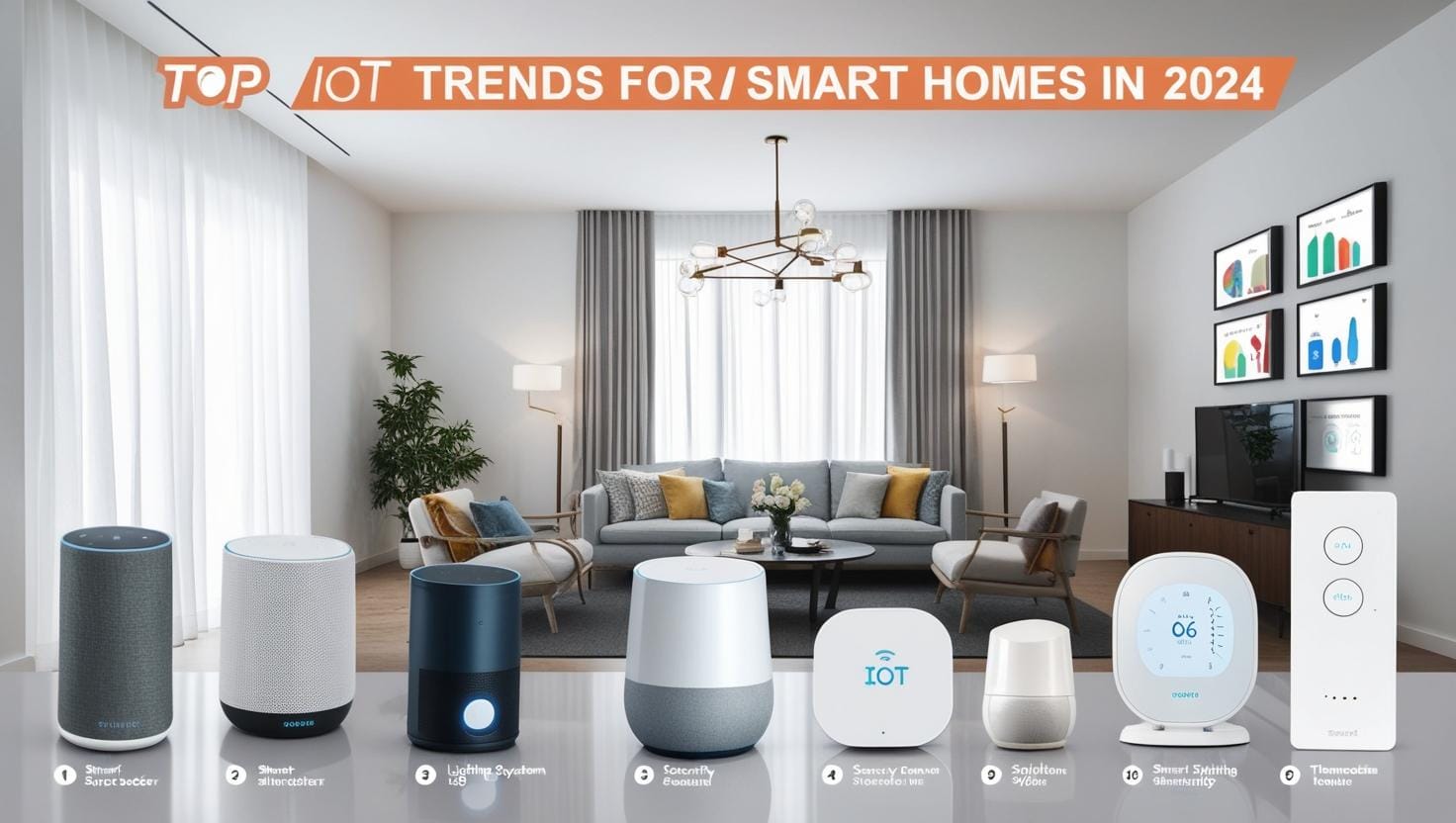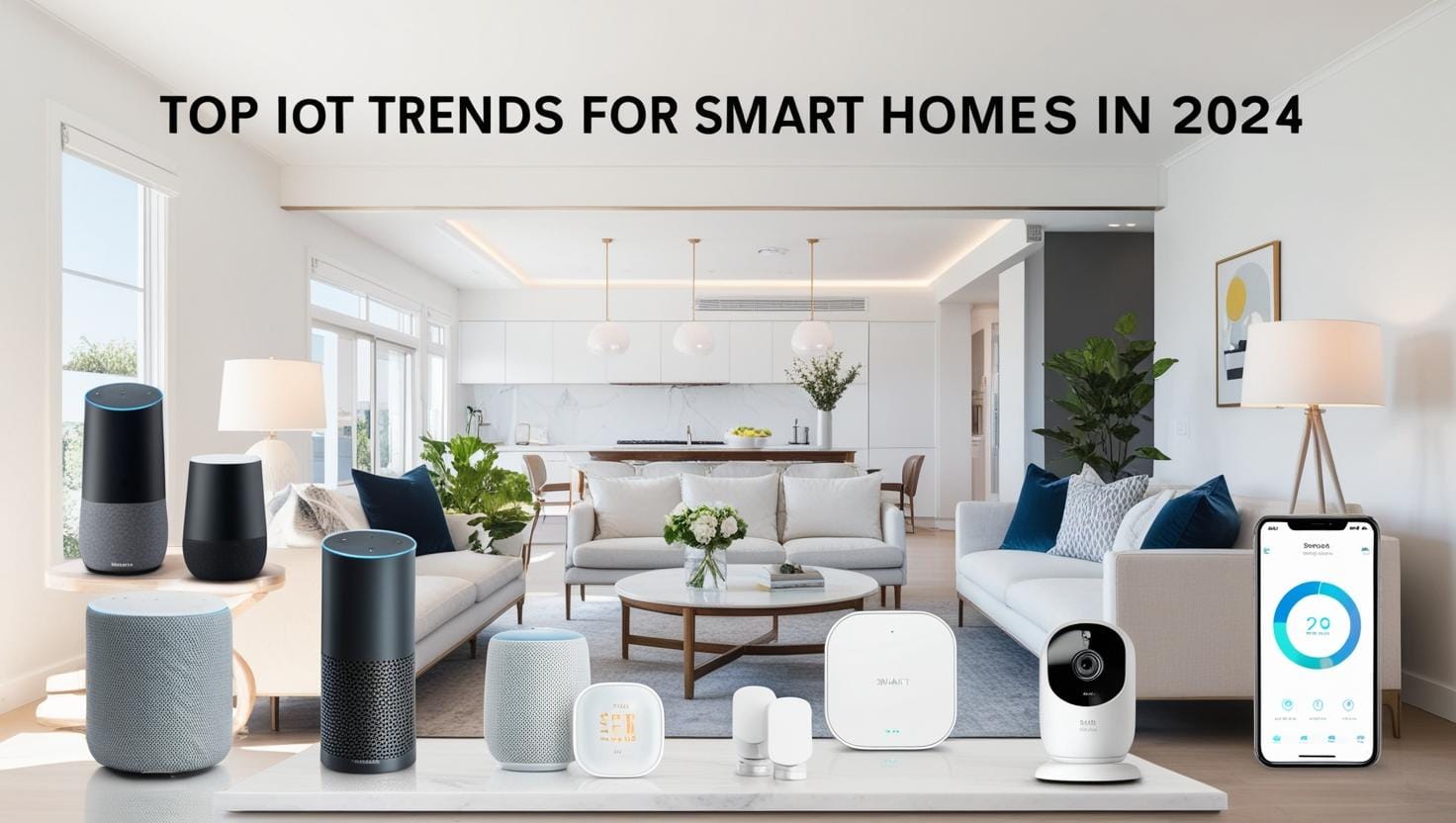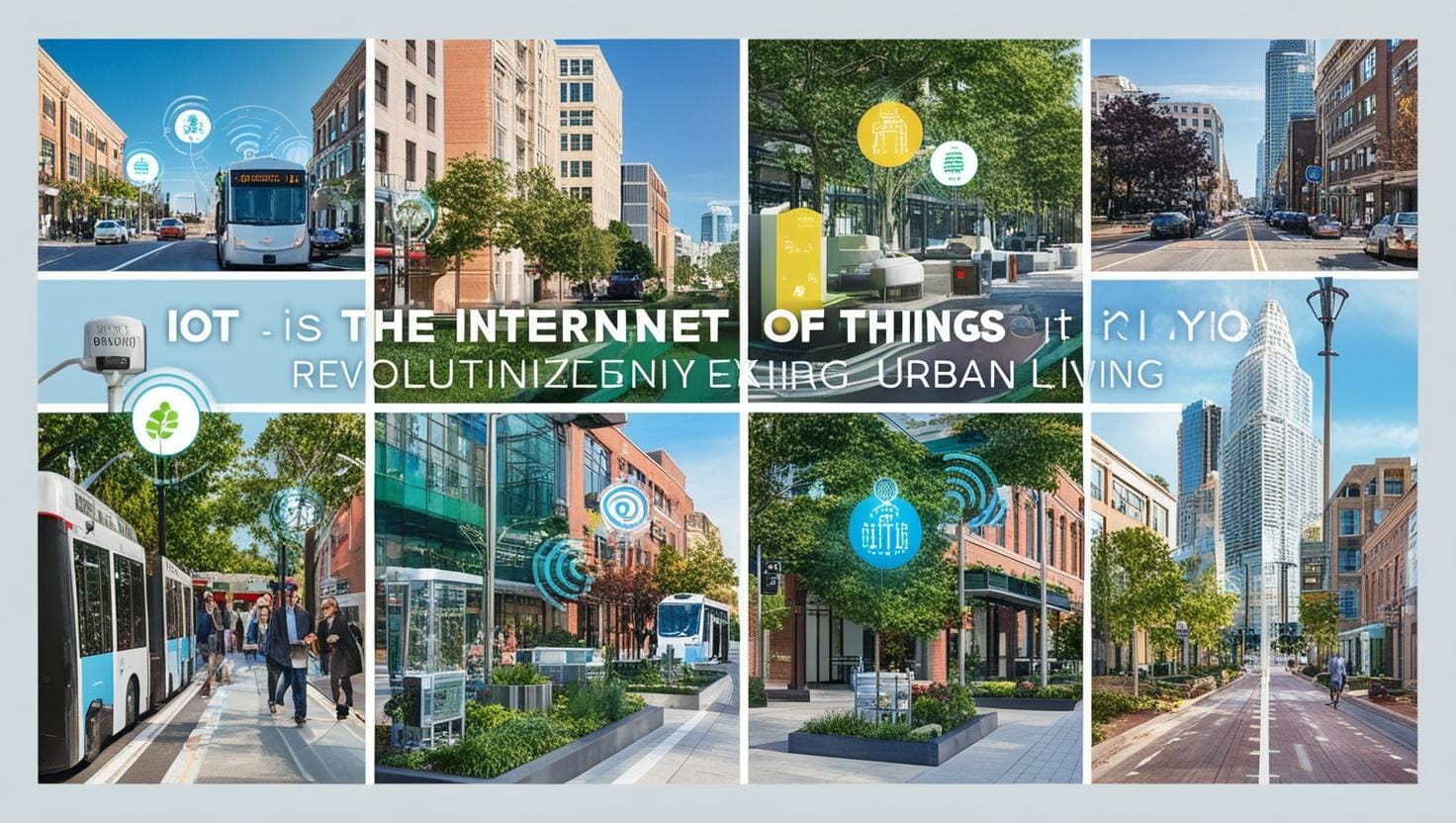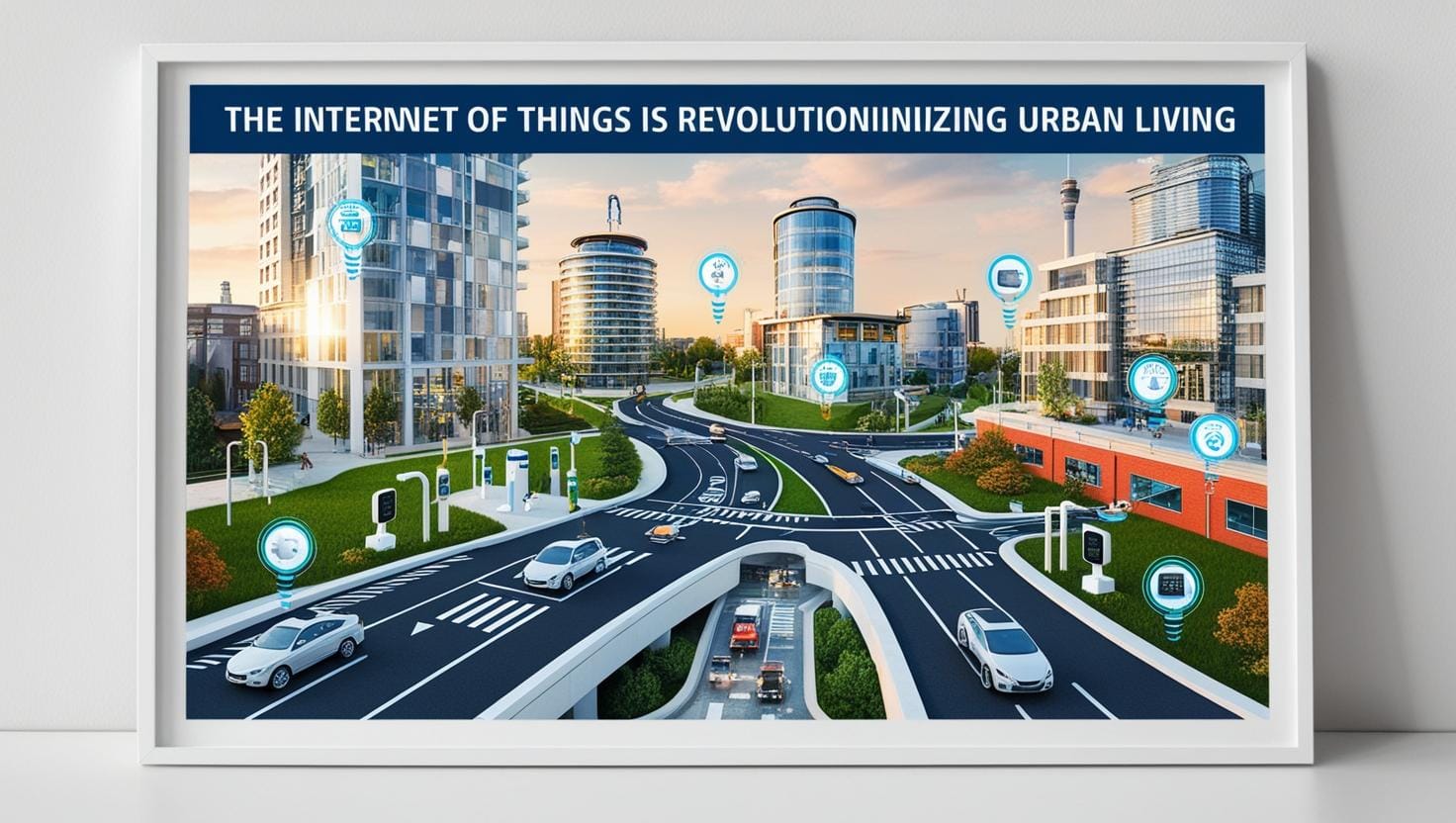Top Smartphone Features to Watch in 2024
As we look ahead to 2024, smartphone technology continues to evolve at breakneck speed. If you’re planning to upgrade or purchase a new device, there are several exciting features on the horizon that you should keep an eye on. Below are the top smartphone features expected in 2024 that will enhance usability, performance, and overall mobile experience.

1. Advanced AI Integration
Artificial intelligence is set to play a more significant role in smartphones this year. Expect AI not only to manage tasks but also to provide personalized experiences. From intelligent photo enhancements to smarter voice assistants, AI will make devices more intuitive and efficient.
2. Improved Battery Technology
With power-hungry applications and 5G connectivity, battery life remains a major concern for smartphone users. In 2024, we can look forward to breakthroughs in battery technology, such as:
These advancements aim to keep your device powered throughout the day without the constant need for a charger.
3. Enhanced Display Technology
The display is one of the most critical aspects of a smartphone. In 2024, you’ll see:
- Higher Refresh Rates: Expect screens with 120Hz and even 240Hz refresh rates for smoother scrolling and gaming experiences.
- Under-Display Technology: Innovations will allow for cameras and sensors to be hidden under the screen, leading to truly borderless designs.
4. 5G and Beyond
As 5G networks continue to roll out, the upcoming year will see smartphones with enhanced 5G capabilities. Expect:
This enhanced connectivity will be vital for gaming, streaming, and other bandwidth-heavy activities.
5. Sustainability Features
With increasing attention to environmental issues, many smartphone manufacturers are prioritizing sustainability. In 2024, expect:
- Eco-Friendly Materials: Devices made from recycled plastics and metals.
- Repairable Designs: More modular designs that allow you to replace specific components rather than buying a new device.
These changes aim to make smartphones more sustainable and environmentally friendly.
6. Advanced Camera Capabilities
Smartphone cameras will continue to evolve, pushing boundaries in photography and videography. Some exciting enhancements include:
Get ready for professional quality images right from your pocket!
7. Security Enhancements
As cybersecurity remains a significant concern, look for smartphones in 2024 to include enhanced security features, such as:
This emphasis on security will provide users with greater peace of mind.
8. Foldable and Flexible Screens
The trend of foldable smartphones will gain momentum, with manufacturers looking to improve durability and screen quality. Expect:
- More Robust Displays: Enhanced technology to avoid issues like screen creasing and damage.
- Flexible Form Factors: Devices that can transform into tablets or other shapes for diverse use cases.
These innovations promise to reshape how we think about smartphone design.
As you prepare for 2024, keeping an eye on these smartphone features will help you make an informed decision when it’s time to upgrade. Whether you’re a casual user or a tech enthusiast, the advancements in mobile technology are sure to enhance your experience.
For more information on the latest in smartphone technology, you can visit TechRadar and Digital Trends for updates.
The Impact of AI on Mobile Photography

The world of mobile photography has undergone an explosive transformation, largely fueled by the advancements in artificial intelligence (AI). As smartphones continue to dominate the photography landscape, AI has become an essential component, enhancing the way we capture, edit, and share photos. Let’s explore how AI is reshaping mobile photography, making it more accessible and enjoyable for everyone.
1. Enhanced Image Processing
One of the standout benefits of AI in mobile photography is enhanced image processing. Algorithms can now analyze the details in an image, optimizing exposure, contrast, and color without manual intervention. This means that even novice photographers can capture stunning photos with minimal effort. AI algorithms can automatically adjust settings based on the scene, delivering superior images.
For many smartphone users, low light photography has always posed a challenge. Recent AI advancements are tackling this issue head-on. With technologies like Night Mode, AI can effectively brighten images taken in dim environments while minimizing noise. The result? Sharper and clearer photos, even in the darkest of settings.
3. Intelligent Scene Recognition
AI-driven scene recognition can identify various subjects and environments. This includes landscapes, portraits, food, and more. When the camera recognizes a scene, it can automatically adjust settings to suit the environment. For example, if you’re taking a landscape photo, AI will enhance colors and depth. This feature provides users with an intuitive experience, as they don’t have to manually tweak settings.
4. Advanced Portrait Mode
Portrait photography has been revolutionized with AI. Smartphones now use depth sensing and AI segmentation to differentiate the subject from the background. This allows for beautifully blurred backgrounds, creating professional-quality portrait shots. Additionally, AI can enhance skin tones and apply flattering filters, making every portrait pop.
5. Automatic Editing Solutions
After taking photos, editing can often become a tedious task. Thankfully, AI has introduced automatic editing solutions that streamline this process. Some apps can apply filters, adjust lighting, and even retouch images with just one click. These features democratize editing, allowing users of all skill levels to elevate their photography quickly.
6. Smarter Photography Apps
Mobile photography apps are incorporating AI to boost functionality and ease of use. From real-time suggestions on composition to intelligent cropping and framing options, AI has made photography apps smarter than ever. These innovations not only assist users in taking better photos but also encourage them to step out of their comfort zones, exploring new styles and techniques.
7. AI-Powered Content Creation
AI is also influencing how we share our images. Many platforms use machine learning to provide tailored suggestions for content and filters based on your previous activity. These personal touches help users connect better with their audience and create engaging stories. This kind of personalization can enhance user enjoyment, making content creation feel less like a chore.
8. Effortless Group Photos and Action Shots
Taking group photos or capturing fast-moving subjects used to be hit-or-miss. Now, AI enhances these experiences by tracking faces and optimizing shots to ensure everyone looks great, even in a busy scene. It also facilitates continuous shooting modes, enabling multiple shots within a fraction of a second, so you don’t miss that perfect moment.
9. Bringing Artistry to Mobile Photography
AI fosters creativity by offering artistic filters and style transfers inspired by famous artwork. With deep learning techniques, applications can apply unique styles to photos, allowing users to create visually stunning pieces of art that are inspired by their favorite artists.
10. The Future of AI in Photography
As technology continues to evolve, the influence of AI on mobile photography will only deepen. Future enhancements could feature more intelligent user interfaces, expansive editing options, and improved hardware integration, making every smartphone a powerful photography tool.
The impact of AI on mobile photography has made high-quality photography accessible to everyone. Features such as enhanced image processing, improved low light performance, and intelligent scene recognition are just the beginning. Getting familiar with these advancements can greatly enhance your photographic experience.
For those eager to explore this fascinating area further, check out resources on AI in Mobile Photography and The Best Camera Phones. By harnessing the power of AI, you can transform your mobile photography into a stunning form of art.
Innovations in Smartphone Battery Technology

As technology rapidly evolves, one aspect that continually captures our attention is smartphone battery technology. With daily usage stretching our devices to their limits, innovations in this area promise not just longer battery life, but smarter, more efficient, and environmentally friendly solutions. Below are some key innovations in smartphone battery technology to keep an eye on in the near future.
Solid-State Batteries
Solid-state batteries are heralded as the next big leap in battery technology. Unlike traditional lithium-ion batteries, which use liquid electrolytes, solid-state batteries use solid materials. This change offers multiple advantages:
- Increased Energy Density: Solid-state batteries have the potential to store more energy in the same amount of space, leading to longer-lasting battery life.
- Enhanced Safety: They are less likely to catch fire, making them a safer option.
- Faster Charging: These batteries can charge much quicker, often within minutes.
Companies like Solid Power are making great strides in this field, aiming to improve our smartphones dramatically.
Graphene Batteries
Graphene is another material that could revolutionize smartphone batteries. Graphene batteries promise:
- Ultra-Fast Charging: Unlike conventional batteries, graphene batteries can charge up to 10 times faster.
- Incredible Longevity: They maintain their performance over more charge cycles, meaning they could last years longer than their traditional counterparts.
- Lightweight Design: Their lightweight nature could help design slimmer smartphones without compromising battery life.
Companies such as Faradion are exploring this technology, aiming to bring it to consumer electronics soon.
Battery Management Systems
Enhancements in battery management systems (BMS) can dramatically improve smartphone battery performance. BMS allows users to monitor and optimize the charging process. Key enhancements include:
Advanced BMS solutions are being adopted by brands like Batty Inc. to improve overall efficiency.
Solar Charging
Imagine a smartphone that charges itself using sunlight. Solar charging technology is progressing, allowing for:
- Integrated Solar Cells: Some devices might soon feature solar panels embedded in their screens to allow continuous charging.
- Sustainable Energy: Utilizing renewable energy sources is a game changer, significantly reducing the carbon footprint of our devices.
Companies like Nuvve Corporation are already exploring these possibilities.
Wireless Charging Innovations
Wireless charging is evolving from a convenience to a necessity. Innovations here include:
- Faster Charging Rates: New technologies are pushing wireless chargers to speeds that rival wired chargers.
- Long-Distance Charging: Future technology may enable charging from a distance, eliminating the need for a physical connection.
Companies pushing the boundaries include WiTricity.
Battery Recycling Programs
As we innovate, addressing environmental concerns is vital. Battery recycling technology is evolving and will likely focus on:
- Material Recovery: Efficient processes can reclaim valuable materials from spent batteries.
- Reduced Waste: Implementing effective recycling programs can minimize electronic waste.
Websites like Call2Recycle advocate for responsible battery recycling, supporting sustainability
| Battery Type | Advantages | Potential Brands |
|---|
| Solid-State Batteries | Higher capacity, safer, fast charging | Solid Power |
| Graphene Batteries | Fast charging, long-lasting | Faradion |
| Wireless Charging | Convenient, growing in speed | WiTricity |
As we move forward, staying informed about these developments can help you choose a smartphone that not only fits your lifestyle but supports a more sustainable future. The innovations in battery technology promise to enhance our user’s experience while being eco-conscious, ultimately reflecting a smarter, greener approach to technology.
Enhancements in 5G Connectivity for Users
The world of mobile connectivity is evolving rapidly, and enhancements in 5G technology are set to revolutionize how you connect and interact with the digital landscape. As you explore the advancements coming in this domain, you’ll find features designed to improve speed, reliability, and overall user experience.
Speed Enhancements
One of the most exciting enhancements in 5G connectivity is its incredible speed. With 5G, you can expect download speeds that are several times faster than 4G. This significant boost allows you to:
- Stream high-quality content: Enjoy your favorite shows and movies in 4K without buffering.
- Download large files: Transfer files within seconds, enhancing productivity.
- Engage in real-time gaming: Experience lower latency, which is crucial for online gaming.
Improved Latency
Latency, the delay before a transfer of data begins following an instruction for its transfer, is crucial in many applications. 5G significantly reduces latency, enabling seamless interactions. Here’s what this means for you:
- Enhanced gaming experience: Fast response times can make a world of difference in competitive gaming scenarios.
- Better video calls: Converse with friends and family with less lag, allowing for more natural conversations.
- Responsive smart devices: Smart home devices will react almost instantaneously to your commands.
Network Reliability
5G technology promises higher reliability in mobile networks. This ensures that whether you are in a crowded arena or out in a remote area, your connection remains strong. Key benefits include:
Wider Coverage Areas
With advancements in infrastructure, 5G networks are expected to have broader coverage areas, even in places where connections have previously struggled. What does this mean for you?
- Access in rural areas: Enhanced connectivity outside urban settings, benefiting remote workers and travelers.
- Urban usage: Enjoy reliable connections even in bustling city centers.
Integration of IoT Devices
The rise of the Internet of Things (IoT) is closely tied to 5G advancements. 5G enhances the connectivity of IoT devices, impacting daily life immensely. Some benefits include:
- Smart home efficiency: More devices can interact with each other, streamlining tasks in your home.
- Real-time data collection: Businesses can gather and analyze data from IoT devices efficiently.
Enhanced Virtual Reality Experiences
With high speeds and low latency, 5G opens the door to immersive virtual reality (VR) experiences. You can expect:
- Better remote participation: Engage in virtual events and meetings with minimal disruption.
- Advanced gaming experiences: Play VR games with more realistic graphics and better interaction.
Future-Proofing Your Devices
As manufacturers increasingly adopt 5G technology in new devices, investing in 5G-capable smartphones and gadgets has become essential. To ensure you are well-prepared:
- Choose wisely: Opt for devices that support multiple bands of 5G.
- Stay updated: Keep your gadgets updated to benefit from the latest enhancements.
To learn more about 5G and its impact, consider checking out 5G Americas and GSMA’s 5G resources. These platforms provide insights into developments, future trends, and detailed reports that can enhance your understanding of 5G connectivity.
As 5G technology continues to advance, you’ll experience faster speeds, improved latency, and a more reliable connection than ever before. With these enhancements unfolding, staying informed on the latest developments can help you make the most of your mobile experience.
The Rise of Foldable Phones and Their Benefits
The rise of foldable phones has captured the attention of tech enthusiasts and casual consumers alike. With a unique design that blends the functionalities of a smartphone and a tablet, these devices are redefining the mobile experience. Let’s explore the transformative innovations brought by foldable phones and their numerous benefits.
Innovative Design and Enhanced Portability
One of the most noticeable advantages of foldable phones is their innovative design. They allow for larger screens without significantly increasing the device’s size when folded. This enhances portability, making them easy to carry in your pocket or bag. The flexibility of design offers several options:
- Compact Size: Foldable phones can fit in smaller pockets, making them more convenient.
- Versatile Displays: Users can unfold their devices for a larger viewing experience when needed, ideal for videos, games, and multitasking.
- Unique Form Factors: Different brands are experimenting with various fold styles, satisfyingly catering to consumer preferences.
Multitasking Made Easy
Foldable phones greatly enhance multitasking capabilities. With a larger display area, you can run multiple apps simultaneously. This will boost your productivity and make daily tasks more manageable. Consider the following benefits:
- Split-Screen Feature: Use two apps side-by-side without switching back and forth.
- Drag-and-Drop Functionality: Move images or texts from one app to another seamlessly.
- Increased Screen Real Estate: Utilize larger screens for creative tasks, like video editing or drawing.
Improved User Experience
The user experience of foldable phones has been optimized for more enjoyment and ease. With features such as:
- Adaptive UI: Tailored user interfaces that automatically adjust based on how the device is positioned.
- Enhanced Gaming Experience: A larger screen leads to more immersive gameplay.
- Better Viewing Angles: Users can fold the device at various angles, perfect for video calls or streaming.
Durability and Longevity
Initially, concerns about the durability of foldable phones arose. However, manufacturers have made significant strides in improving build quality. Many foldable devices now come equipped with:
- Robust Hinges: Advanced hinge technology makes folding smoother and more reliable.
- Protective Materials: Use of specialized screens that resist scratches and damage.
- Extended Lifespan: A greater focus on longevity means fewer users experience performance issues over time.
Environmental Considerations
As sustainability is a growing concern, foldable phones offer valuable environmental benefits. Here’s how:
- Reduced Electronic Waste: A two-in-one device decreases the need for multiple gadgets, contributing to less electronic waste.
- Longer Life Cycle: Improved durability means users keep devices longer, further reducing waste.
- Innovative Recycling Programs: Some manufacturers now offer trade-in programs that promote recycling.
With their rising popularity, foldable phones are poised to dominate the smartphone market in the coming years. Their unique advantages pave the way for better usability, enhanced user experience, and potential sustainability benefits. As innovation continues to drive this trend, consumers will likely see even more exciting features and options in foldable devices, making them an attractive choice for tech lovers.
For detailed reviews and the latest updates on foldable phones, check out TechRadar. You can also explore more about foldable technologies at The Verge.
Stay updated with emerging tech trends by visiting CNET’s Foldable Phones Section.
Key Takeaway:
As we look ahead to 2024, the world of smartphones is set to undergo significant transformations that will redefine user experiences and expectations. With emerging technologies leading the charge, several key features stand out as noteworthy trends to watch.
Firstly, the impact of AI on mobile photography is nothing short of revolutionary. In 2024, expect smartphones to be equipped with advanced AI capabilities that enhance image quality, optimize lighting conditions, and even suggest creative photo compositions. This level of innovation will empower users to take stunning photographs with minimal effort, making photography accessible to everyone, regardless of skill level.
In addition to photography, innovations in smartphone battery technology will take center stage. Rapid advancements are paving the way for batteries that not only last longer but charge faster. By 2024, users can anticipate batteries that reach full charge in mere minutes and offer extended use throughout the day, alleviating the common frustration of battery drain that many face with their devices.
The enhancements in 5G connectivity are another significant trend to watch. With network speeds continually improving, users will experience smoother online gaming, uninterrupted streaming, and seamless video calls. The faster speeds coupled with lower latency will create a more immersive experience, especially for content creators and consumers alike.
Moreover, the rise of foldable phones will reshape the traditional smartphone market. These devices offer versatility and functionality that standard smartphones cannot match. Users can enjoy the convenience of a compact phone that expands into a larger screen, ideal for multitasking or consuming media. As manufacturers innovate further with design and durability, foldable phones are likely to gain widespread acceptance.
The smartphone landscape in 2024 promises to be exciting, driven by advancements in AI, battery technology, 5G connectivity, and foldable phones. These features will not only enhance individual user experiences but will also redefine the capabilities of smartphones in our daily lives. As you stay informed about these trends, look forward to a more connected, efficient, and enjoyable smartphone experience.
Conclusion
As we move into 2024, the smartphone landscape promises exciting innovations that can significantly enhance your user experience. The role of artificial intelligence in mobile photography is transforming the way we capture memories, allowing for stunning images with just a click. Imagine being able to take professional-quality photos without needing to understand complex camera settings. That convenience makes it easier for everyone, whether you’re a budding photographer or just want great snaps for social media.
Battery technology is also on the verge of a major leap, aiming to give you longer usage hours without the constant worry of your phone dying in the middle of the day. Innovations in this area mean you can spend more time entertaining yourself with your device and less time tethered to a charging cable.
5G connectivity continues to expand, bringing faster speeds and improved reliability that will unlock new possibilities for streaming, gaming, and remote work. You’ll experience less lag and more seamless interactions with your favorite apps.
The rise of foldable phones brings versatility to the mainstream consumer. These devices allow for multitasking in ways that traditional smartphones simply cannot match. With their unique form factor, you can enjoy large-screen experiences while still having a device that fits comfortably in your pocket.
As you consider upgrading or switching your smartphone this year, keep an eye on these exciting trends. They promise not only to enhance your daily routines but also to redefine what you expect from your mobile device. Stay informed, because 2024 is shaping up to be an incredible year for smartphone enthusiasts!
Help us grow and improve! We’re constantly working to provide content that fits your needs. If you enjoyed this article, consider sharing it with your network to support us. And if you have any questions, ideas, or suggestions, we’d love to hear them in the comments. We’re always happy to respond!

























